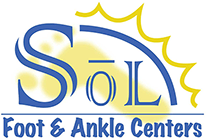A re you or a loved one at risk of falling?
re you or a loved one at risk of falling?
Millions of older adults fall each year. The CDC reports one out of three older people fall each year, but more than half choose NOT to tell their doctor about it.
Falling can mean a loss of independence for most older people, and falling once doubles your chances of falling again. The good news is that falls can be prevented.
February's National Senior Independence Month is the perfect opportunity to evaluate the home and talk with your loved ones about how to reduce the risk of falling.
Statistics
According to the Center of Disease Control:
- 1 in 3 older adults falls each year.
- 1 in 5 falls causes serious injury such as broken bones or head injury.
- 95% of all hip fractures are due to falling.
- Falls are the most common cause of brain injury.
Risks
Risk Factors for Falling:
- Difficulties with walking and balance.
- Foot pain – Increases your chance of falling.
- Poor Footwear – Is hazardous and can do more harm than good.
- Home Hazards – throw rugs, clutter, steps, lack of hand rails along stairs, bathroom and shower.
Prevention
Reduce Your Risk of Falling:
-
Starting an exercise program to improve your leg strength & balance.
-
Talk to your podiatrist if you are having difficulty walking, foot pain, diabetes, or neuropathy.
-
Wear “safe” appropriate footwear at all times.
-
Have an annual eye exam & update your eyeglasses
-
Make your home safe by removing hazards
-
Install handrails on stairs and in the bathroom
Use the free tools below to evaluate your or a loved one's risk of falling and learn more about preventing falls.
Preventing Falls at Home: Room by Room
Be Safe: What's Important to Know?
If you are having problems walking, balancing, or experiencing foot or ankle pain, schedule an appointment with one of our caring podiatrists. For more information contact us at (562) 433-0478
